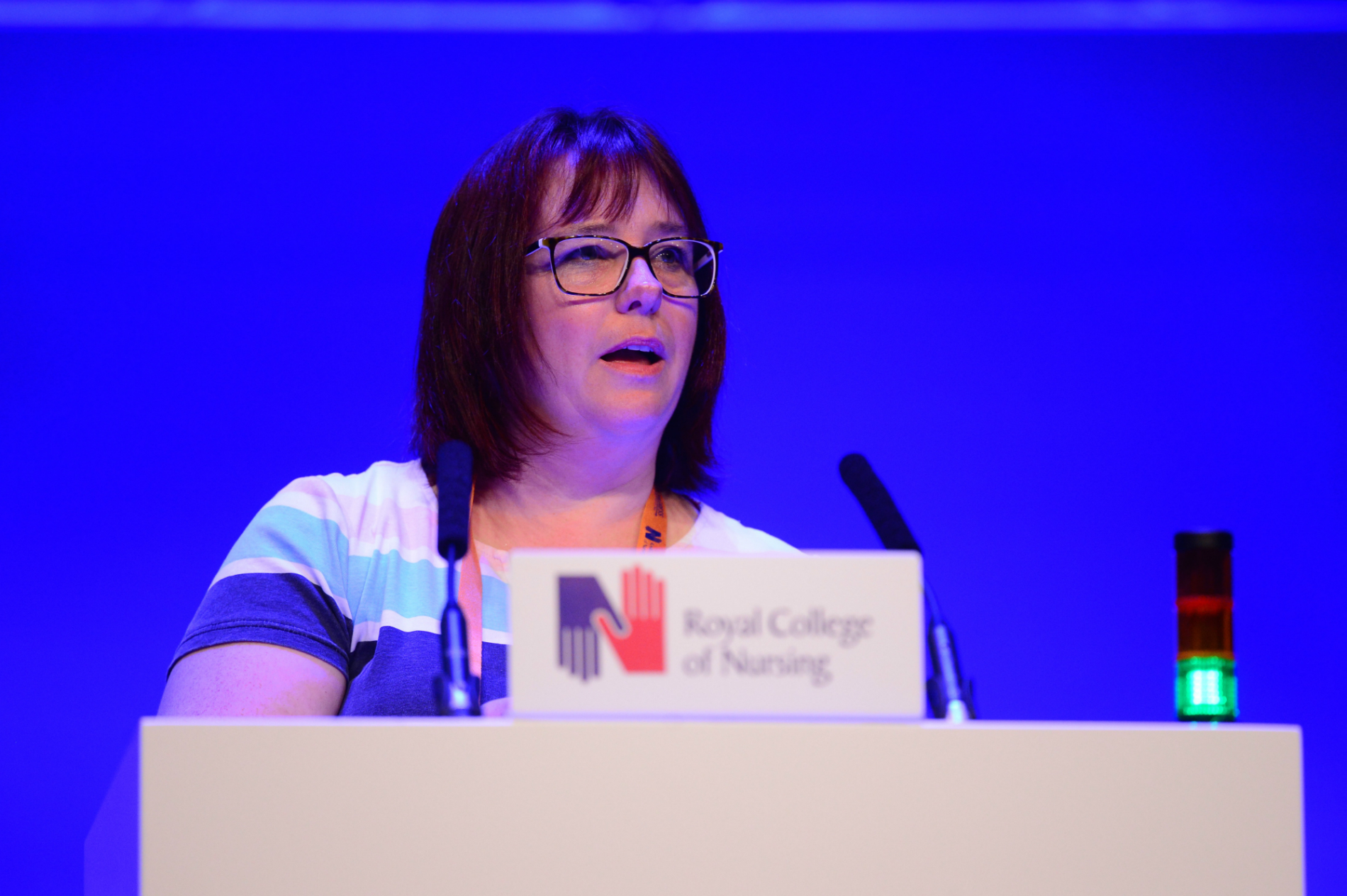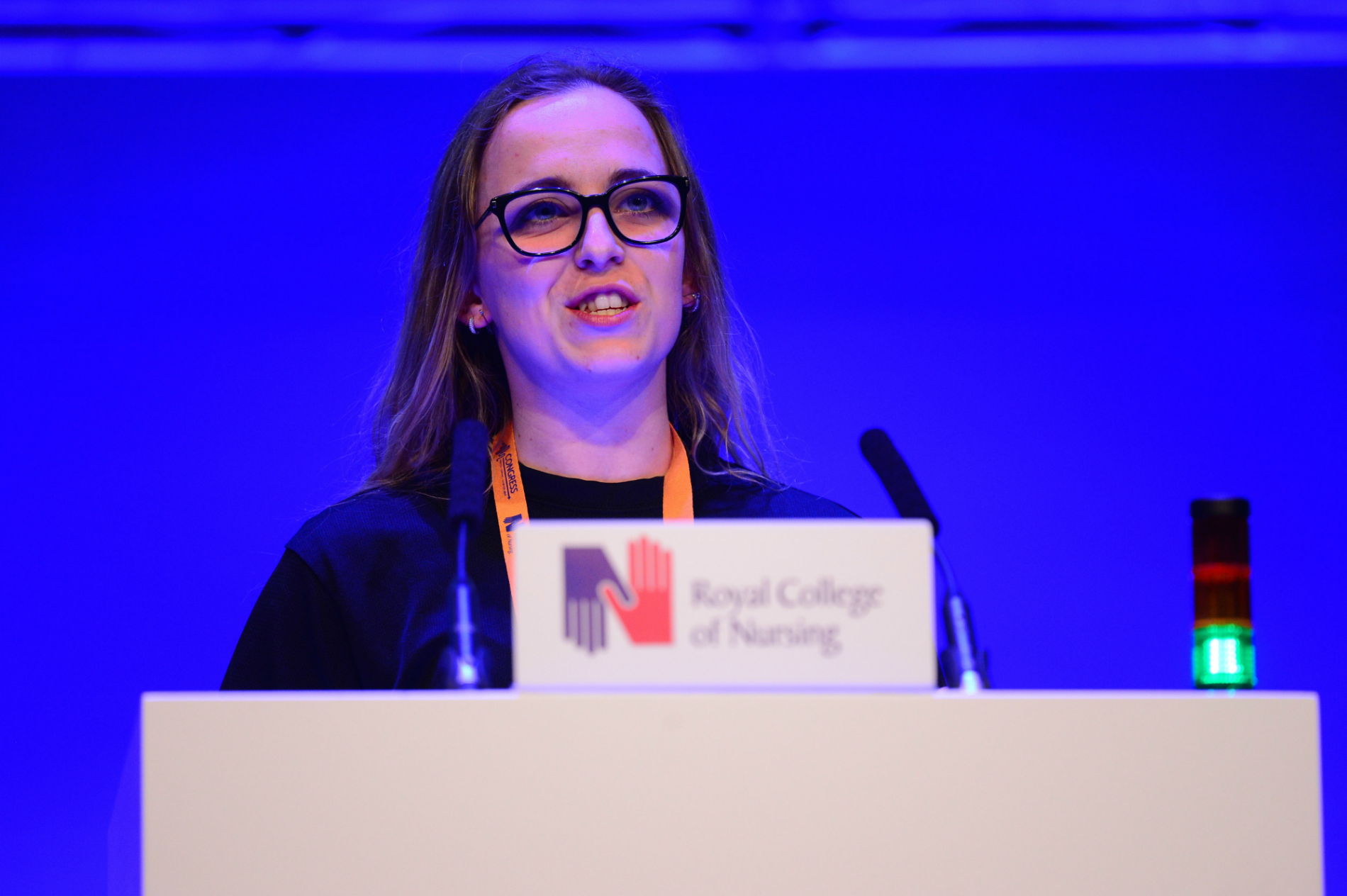The dangers involved in recreational use of nitrous oxide – so-called “hippy crack” – came under the spotlight during an RCN Congress debate
Taking substances in search of a high is rarely without risk, but the dangers involved in this newer form of misuse are being overlooked, members at RCN Congress heard.
Nitrous oxide, also called noz, whippits and hippy crack by users, is a colourless gas commonly found in pressurised metal cannisters. It was once known mostly for its role in anaesthesia but its use as a recreational drug has rocketed in the past few years.
A recent Global Drug Survey listed it as the fourth most used drug in the UK, behind ecstasy, cocaine and cannabis, all of which have a much higher media profile and whose risks are better understood.
By contrast, nitrous oxide is often seen as being low risk and offering a short, harmless burst of euphoria. But Office for National Statistics data shows there were 25 deaths directly linked to the gas between 2010 and 2016. According to media reports last year, in one London borough alone, council workers swept up 1.2 million discarded nitrous oxide cannisters in the space of six months.
Stuart McKenzie, known to many members as a former Chair of RCN Congress, sits on the committee of the RCN Mental Health Forum, which submitted the debate on nitrous oxide. Speaking ahead of the debate, he said that because it is a gas, nitrous oxide is perceived differently from alcohol, solvents and drugs such as heroin.
“The reality is we’re talking about an unstable substance which is designed to be an anaesthetic, and which causes hypoxic brain damage and injury,” he said. “And there’s no clear treatment pathway for nitrous oxide addiction so people don’t accept that individuals can be addicted.”
Easily accessible
FRANK, the drugs information website, says heavy, regular use of nitrous oxide can lead to severe B12 deficiency, which in turn can cause nerve damage, and problems with the formation of white blood cells. Mixing nitrous oxide with alcohol is especially dangerous, the website says, and psychological dependence is a risk.
Its classification as a psychoactive drug makes nitrous oxide illegal to supply for its psychoactive effect. But there’s no penalty for possessing it and, said Stuart, it’s easily available from sites such as Amazon and eBay, where it is often sold mainly as a means of creating whipped cream.
And although legislation has been changed to try to limit its availability, two major court cases brought forward by the Crown Prosecution Service in England failed. “The legislation is essentially toothless,” said Stuart.
The aim of the debate at Congress was to heighten understanding among nursing staff.
Opening the debate, Becky Hoskins of the RCN Mental Health Forum said many young recreational drug users took nitrous oxide in the belief that it was almost harmless. “The truth, however, could not be further from this view,” she said.
But some speakers argued against a narrow focus on the dangers of a single drug. Linda Bailey said many substances were being used without an understanding of their risks, such as the bladder disorders that ketamine can cause.
And RCN Council member Dave Dawes, highlighting the comparative dangers of other substances, said: “I think we can be clear, there are no safe recreational drugs – all carry risk and can kill, as can many legal substances.”
Stuart said: “The feeling on the Mental Health Forum is that we should be working as a professional college to raise awareness of the problems nitrous oxide causes. For example, how do nurses in accident and emergency and primary care recognise its use?
“We are also aiming to open up the debate – to look at how, as health professionals, we can work with the legislature to undertake health promotion and to combat the prevalence of deaths associated with nitrous oxide.”
As nurses we need to have proper conversations with people about the risks, to support those who need our help
Another barrier comes from the cuts to funding for drug and alcohol services, which fell from £877m in 2013-14 to £716m in 2017-18, meaning information, research and support for this relatively new drug use has been limited.
Catherine Gamble, RCN Professional Lead for Mental Health, said: “As nurses we need to have proper conversations with people about the risks, to support those who need our help.
“But better public information about the risks would help members of the public stay safe and reduce the burdens on hard-pressed nursing professionals.”
The debate at Congress
'It ruined my life'
The potential risks of using nitrous oxide as a recreational drug were exposed last year in a series of newspaper reports about a young mother whose habit of using up to 15 balloons filled with the gas over a weekend left her paralysed.
Olivia Golding, 24, told the media the drug had “ruined her life”. She was diagnosed with Lichtheim’s disease, a degenerative condition of the spinal cord that occurs as a result of vitamin B12 deficiency, which is associated with repeated use of nitrous oxide.
Interviewed by ITV News, she said that as she was inhaling nitrous oxide at a festival, she began getting pins and needles in her back. “I woke up three days later and felt like I’d been in the gym for six hours.”
Hospitalised for two weeks, she said: “I couldn’t speak, my eyesight was going, I was talking like I had a stutter.”
She issued a warning to others about the dangers of nitrous oxide. “Everyone’s doing it, you don’t think it’s going to hurt you. But it can happen to anybody. You have a 20-second high, for weeks and months of rehabilitation.”
Advertisement













